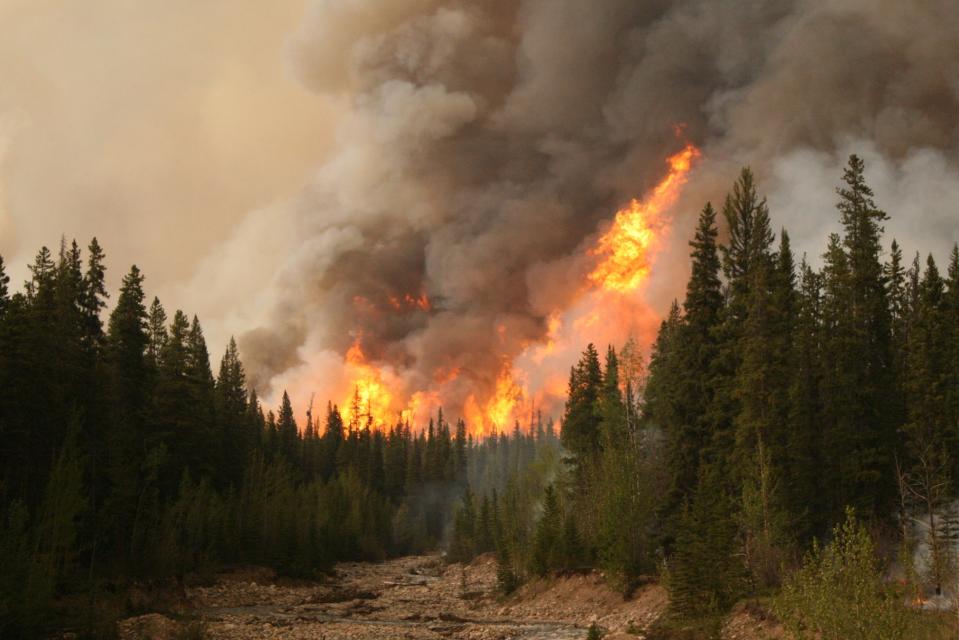Ontario, and Canada, should get used to more fire seasons like this one: federal scientist
If you’ve felt lately like forest fires in Ontario are becoming more frequent and more intense, it’s not your imagination.
Federal scientist Lynn Johnston warns summers like this one will be increasingly more common in the future, and says the people in charge of putting out fires in Ontario and across the country lack the resources to deal with this potential new reality.
After what the Ontario Ministry of Natural Resources refers to as a 10-year interlude of fewer forest fires and less land burned, this year’s intense fire season reminds Ontarians seasonal weather patterns, human activity and climate change can come together to turn a trend on its head.
“This fire season has been pretty crazy,” confirmed Johnston, a forest fire research specialist with the Canadian Fire Service, adding that more fires than usual have burned closer to towns and roads, exposing more people to danger.

“It’s more prominent this year,” Johnston said. “There’s also more people living where fires are happening. So more people are at risk.”
The province has seen a 72 per cent increase in forest fires this year over the 10-year average, recording 1,118 fires as of Aug. 21.
As firefighters in British Columbia battled more than 500 forest fires, their counterparts in Ontario were finally able to hold the Parry Sound 33 fire at 11,362 hectares on Aug. 20 after it burned out of control in the northern part of the province for over a month.
On the day Parry Sound 33 started, there were 66 active forest fires in northeastern Ontario, 28 of which were out of control.
Johnston said Ontario’s trouble this year began during the spring thaw, when snow melted suddenly, the ground dried quickly, and little rain fell.

“It was so dry our fire danger for the spring and early summer was not normal at all,” she said.
Add lightning storms, windy conditions and a hot summer to that mix and you get the recipe for an intense fire season.
And Johnston says Ontarians should get used to the idea of more summers like this one
“The quote that’s been going around lately is ‘the new normal,”‘ she said. “So more hot, dry, windy conditions, more storms, more lightning. Our fuels are going to be dry and ready to burn.”
Data from both the Canadian National Fire Database (CNFDB) and the National Forestry Database (NFD) show an overall increase in the area burned in forest fires in Canada since 1970.
And the Ontario Ministry of Natural Resources warns that while low 10-year averages can suggest fire activity is trending downward, climate change might be increasing forest fire variability — or intense fluctuations.
Johnston agrees. While each year’s forest fire patterns see fires concentrated in different parts of the country — from southern B.C. to northern Ontario to the Yukon, for example — Johnston said climate change is intensifying those patterns.
“With climate change, it’s hotter and drier, we’re seeing more extremes in winds and really, really dry fuels producing really extreme fire behaviour,” she said.
“Ontario, in particular, is getting more fires and more area burned.”
The Ontario government appeared to acknowledge this when it announced on Aug. 8 it would spend an additional $100 million to fight the 120 forest fires burning across the province.
“This money will pay for continued fire response efforts, which includes supplies and equipment used to suppress the fire and the work of support personnel and MNRF fire rangers,” said Jeff Yurek, Minister of Natural Resources and Forestry.
At that time, the province said, the efforts of almost 1,000 firefighters from Ontario were being boosted by aircraft, firefighting equipment and about 480 firefighters and support staff from other provinces, Parks Canada, the U.S. and Mexico.
The announcement said some of the new funds would go to paying for more out-of-province and international help.
The future may be fiery
But if climate change does fuel more forest fire seasons like this one, it’ll take more than the traditional methods and resources to maintain an edge over fires in Ontario and across the country, Johnston warned. It’ll take resources we don’t have yet.
“We are not equipped to deal with the future in fire management,” she said. “We have kind of reached a point where we have diminishing returns for any investment in fire suppression.”
To illustrate her point, she compared throwing resources at existing fires to chasing a rabbit that always runs a bit faster.
“It doesn’t really matter how many resources you throw at it,” she said. “Once you start spending a certain amount of money and have a certain amount of water bombers, there’s only so much more you can do and there’s only so much more benefit you get for every million dollars you spend.”
Resource sharing like the kind the province just increased funding for is a good way to balance demand, she agreed, but she said governments will need to invest in scientific research and technology to stay on top of fire suppression in the future.
“Without continued, significant research funding for new tools, new innovations, new ways to approach fire management, it’s going to be very difficult to even keep pace with what we’re doing now.”
The provincial government could not be reached for comment by publication deadline.


